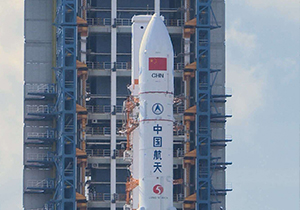In material aging tests, weather resistance testing, and light exposure studies, xenon lamp climate test chambers play a crucial role. Based on the cooling method, xenon lamp climate test chambers are primarily divided into two types: air-cooled and water-cooled. So, what are the differences between air-cooled and water-cooled xenon lamp climate test chambers? And how should we select the appropriate equipment?
I. Features of Air-Cooled Xenon Lamp Climate Test Chambers
Cooling Method: Utilizes an air-cooling mechanism, where fans circulate air to dissipate heat and maintain temperature balance inside the chamber.
Convenience: Simple installation, no additional water supply required, making it suitable for mobile or space-limited laboratories.
Lower Maintenance Costs: The air-cooling system is relatively simple to maintain, with a lower failure rate, reducing operational and maintenance expenses.
Higher Operational Noise: Air-cooled equipment generates some noise during operation, which may cause disturbances in certain environments.
II. Features of Water-Cooled Xenon Lamp Climate Test Chambers
Superior Cooling Performance: The water-cooling system effectively removes heat generated by the xenon lamp, enabling stable operation at higher power levels, making it suitable for large-scale or high-intensity testing needs.
Precise Temperature Control: The water-cooling system better manages temperature fluctuations inside the chamber, improving the repeatability and reliability of experiments.
Wider Applicability: Excels in environments with high-temperature requirements, making it ideal for long-duration, high-intensity testing.
More Complex Maintenance: Requires regular cleaning and maintenance of the water circuit, demanding more effort in upkeep.

III. How to Choose
When selecting between air-cooled and water-cooled xenon lamp climate test chambers, consider the following factors:
Testing Requirements: If the experiment involves long-duration, high-intensity testing with stringent temperature and humidity requirements, a water-cooled chamber may be more suitable. For less demanding needs and simpler maintenance, an air-cooled device is preferable.
Laboratory Environment: If the lab has limited space and lacks convenient water access, an air-cooled system is a better choice. For labs with more space, a water-cooled chamber offers superior performance.
Budget Considerations: Air-cooled xenon lamp climate test chambers are generally cheaper to purchase initially and have lower long-term maintenance costs. Water-cooled chambers, while potentially more expensive upfront, demonstrate better cost-effectiveness in high-frequency, long-duration usage due to their performance advantages.
Noise Concerns: In noise-sensitive environments, such as research labs or medical equipment testing, water-cooled xenon lamp climate test chambers can effectively avoid noise interference.
Air-cooled and water-cooled xenon lamp climate test chambers each have their own strengths. The choice between them should be based on specific experimental needs, environmental conditions, budget, and other factors. Understanding their characteristics can help researchers make informed decisions, ensuring the scientific accuracy of test results. As you prepare for weather resistance research or material testing, recognizing these differences will undoubtedly support your experiments.














